The Atlas Obscura Guide to 11 Hidden Wonders of Vienna
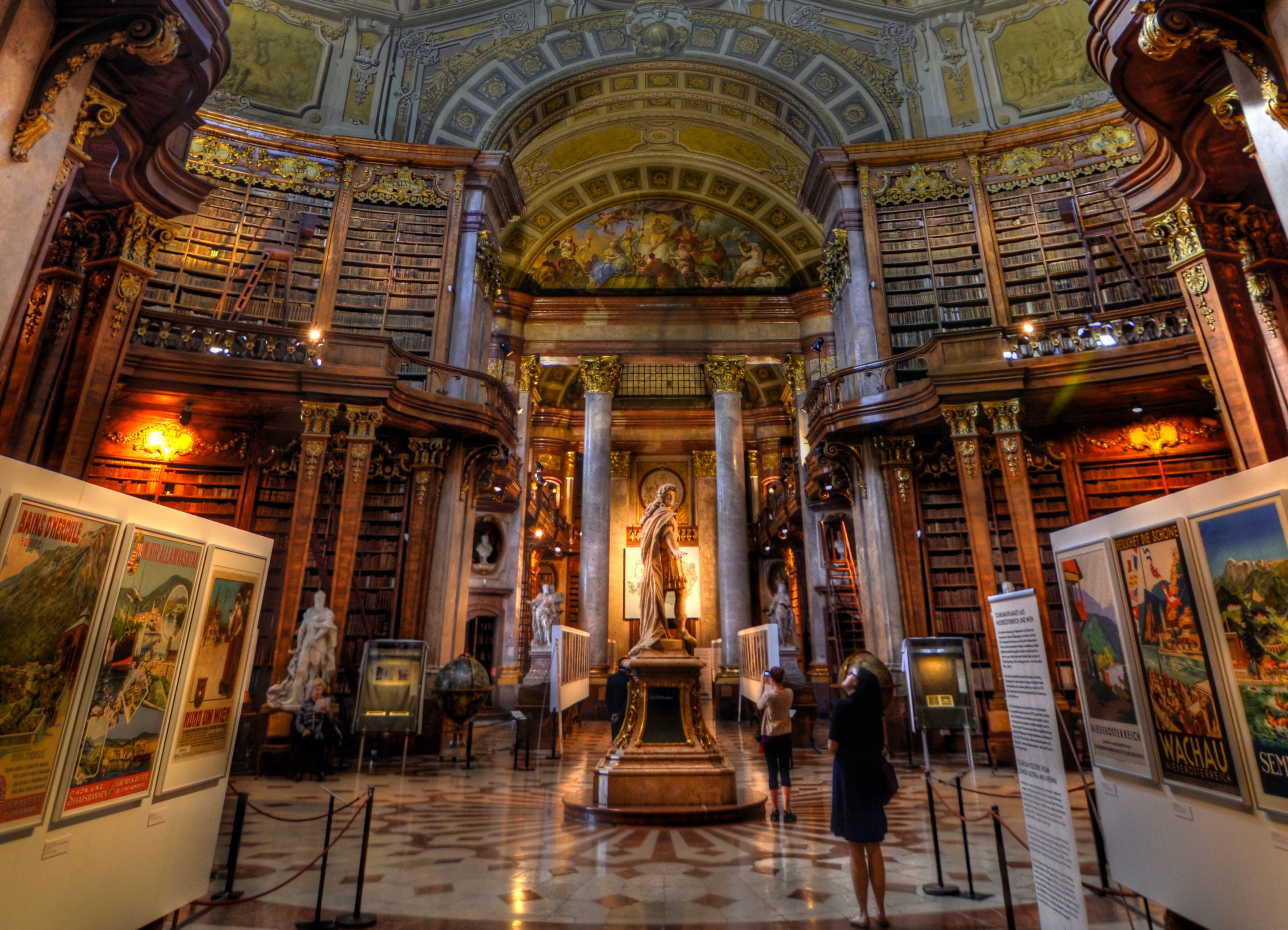
Oh, just the public library. (Photo: Richard Hopkins on Wikipedia)
Austria’s capital city of Vienna is an urban melting pot of historic architecture and cosmopolitan living. The so-called “City of Music” sees millions of visitors arrive each year to take in the city’s sites, but there are a number of hidden wonders scattered throughout Vienna that most tourists never find out about. From relics of the grandiose Habsburgs to museums of undertaking and Esperanto, Vienna holds a treasure trove of curious locations that have to be seen to be believed. Take a look at the Atlas Obscura Guide to the Hidden Wonders of Vienna.

That crown seems wasted on a skeleton. (Photo: Erwin Kugler on Wikipedia)
Sitting beneath Vienna’s Capuchin Church, the Habsburg Imperial Crypt holds the remains (including hearts in a separate room) of 143 members of the royal family. Befitting the baroque stylings associated with the Habsburgs, the burial crypt is an elaborate collection of metal sarcophagi holding the bodies of emperors, empresses, and others of royal blood. The coffins are decorated with ornate skulls, lions, and filigree that not only honor the dead, but are likely to make the living jealous. The hearts and entrails of the deceased were often placed in separate urns, which were in turn held in adjoining tombs. Rarely has death looked so beautiful.
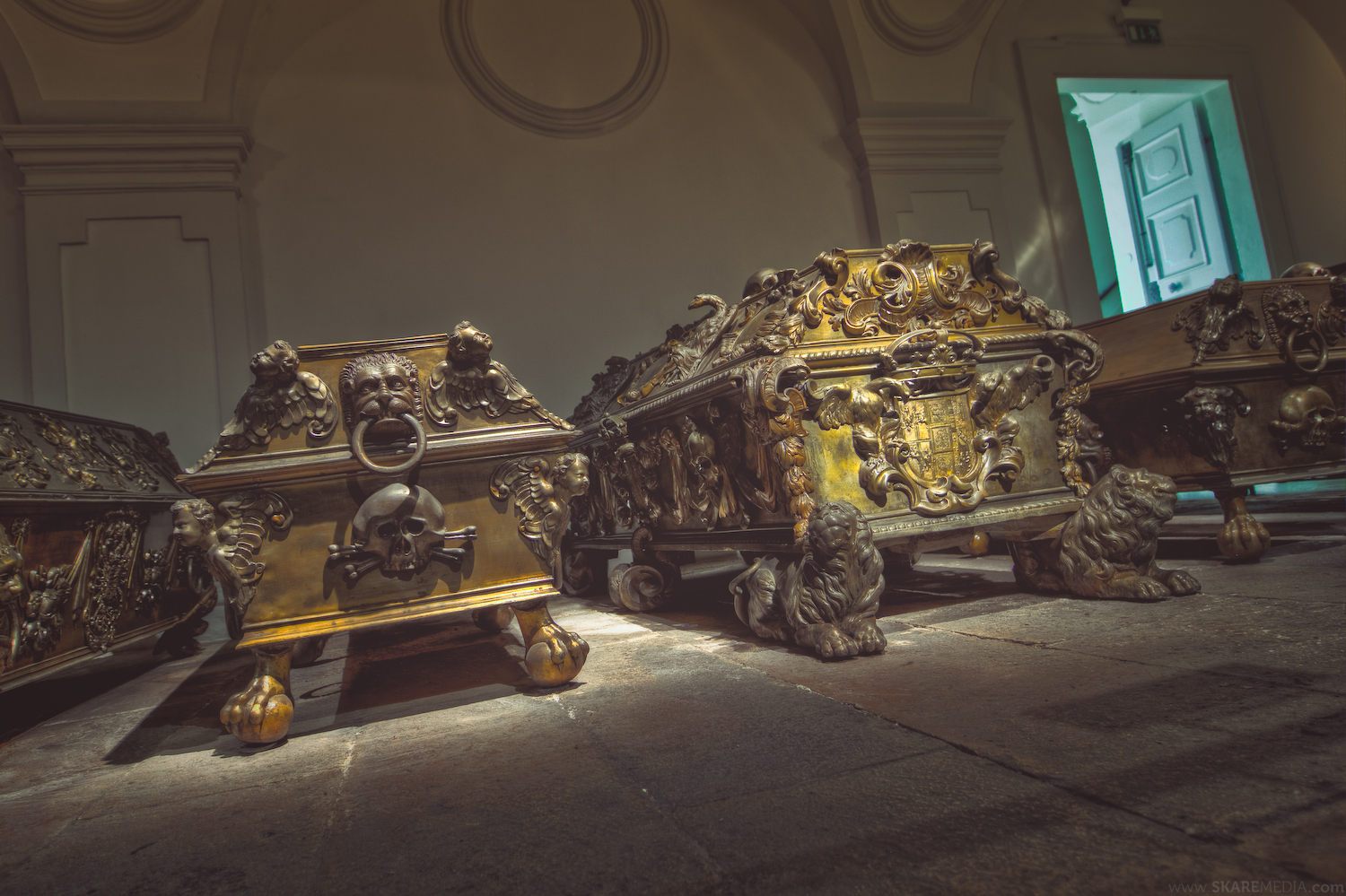
Welcome to the coffin show. (Photo: Skare Media on Atlas Obscura)

Hogwarts? (Photo: Oke on Wikipedia)
Coffins weren’t the only thing the Habsburgs did in style. What is now the Austrian National Library was once the historic book collection of the Habsburg monarchy, and it shows. The grand space is filled with columns, busts, and fine woodworking detail, rivaled by few other other libraries in the world. The collection today contains more than two million books. In addition to the collection of books, the library also incorporates a couple of other collections that are wonders in their own right.

Who says print is dead? (Says the internet writer.) (Photo: joiseyshowaa on Wikipedia)
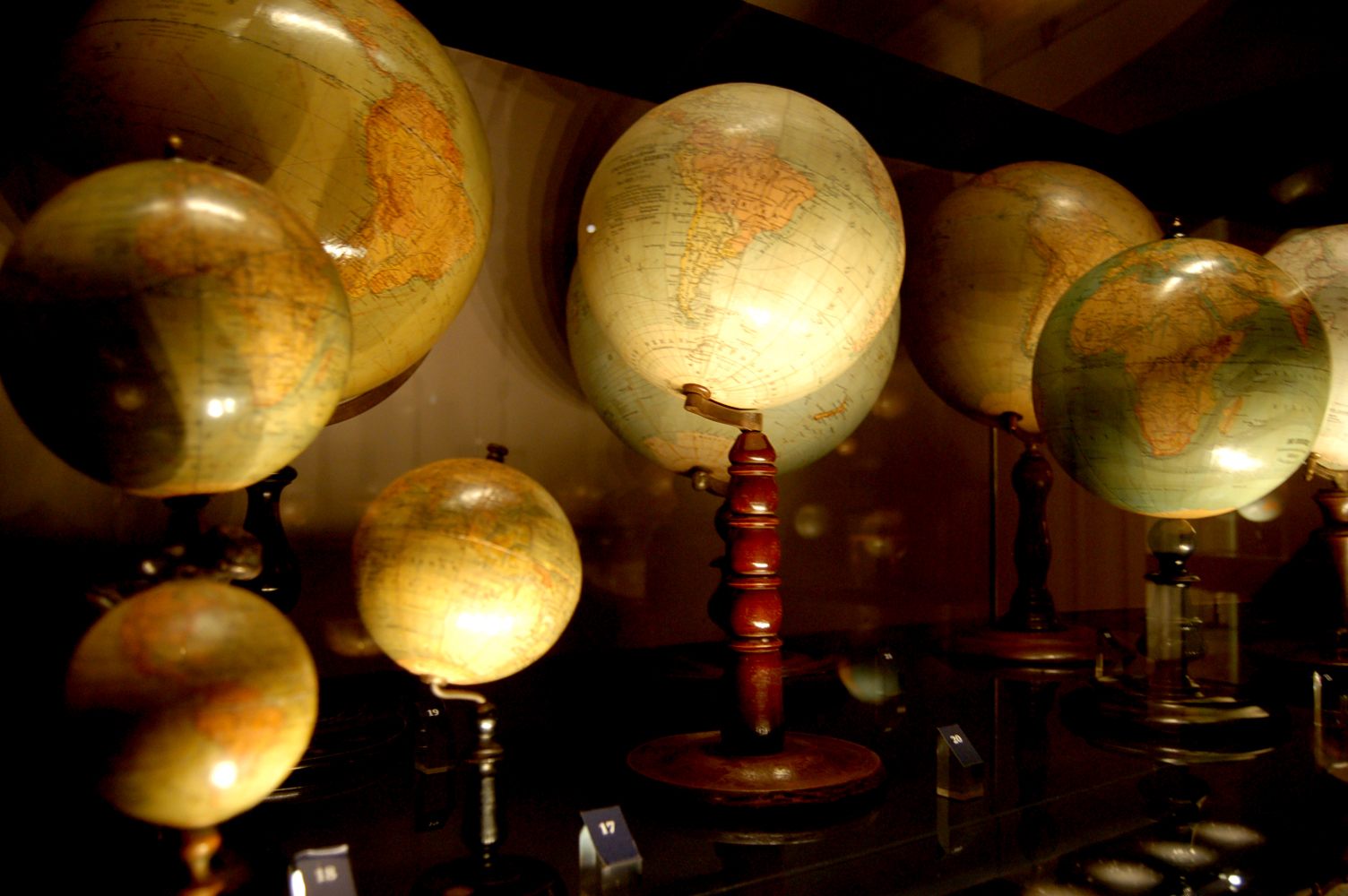
Where in the world is the Globe Museum? Vienna. That’s where. (Photo: AtlasObscura.com)
One of the unique collections held under the umbrella of the Austrian National Library (but in a different space) is the Globe Museum, which is the only museum in the world singularly devoted to globes. Including globes both terrestrial and celestial (in the heyday of globular maps, they often came in pairs) the collection holds more than 600 specimens, with 200 or so on display at any given time. There are inflatable fabric globes, tiny handheld globes, and giant globes as large as a person. Surprisingly, its easy to get lost among this gorgeous collection.
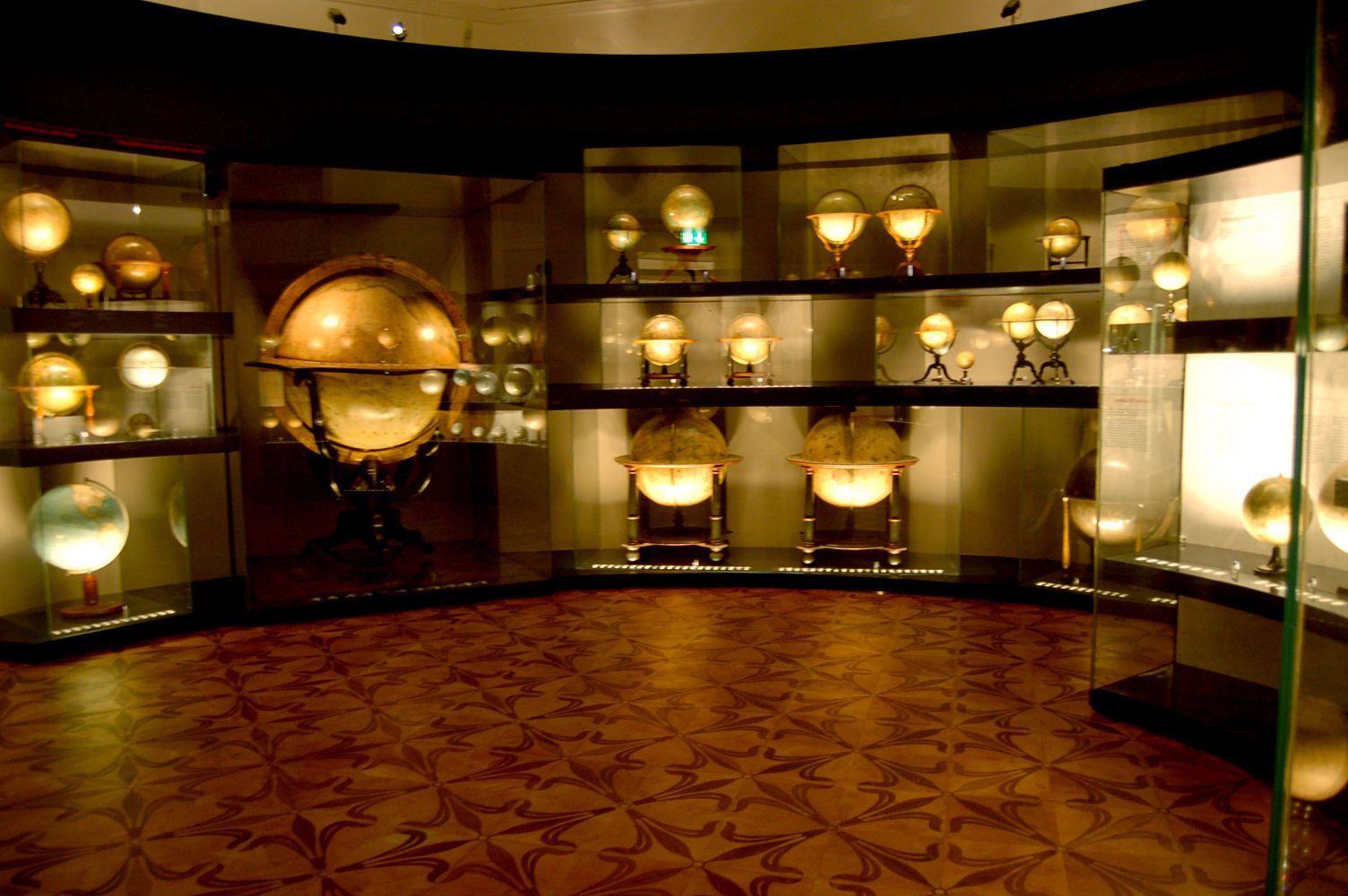
Where in the word did they find so many globes? (Photo: AtlasObscura.com)
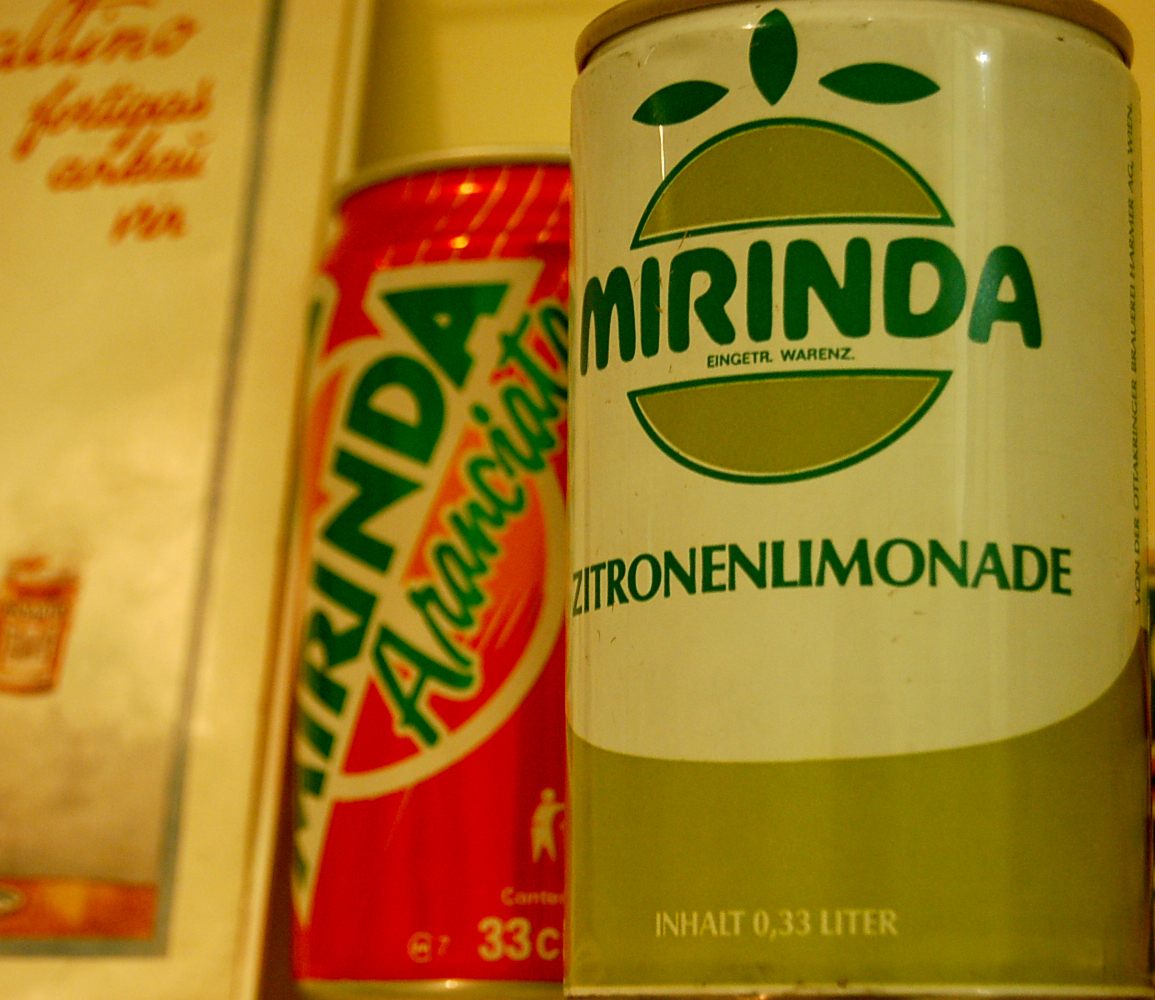
Um, is it Mountain Dew? (Photo: CuriousExpeditions.org)
The second notable collection overseen by the Austrian National Library is the Department of Planned Languages and Esperanto Museum, or the Esperanto Museum for short. This unique collection collects artifacts related to the constructed language that was developed in the 1880s as a possible universal tongue. While it never really caught on in the way its inventor would have liked, it remains the most successful created language in history. The collection holds such oddities as soda cans written in Esperanto as well as thousands of books, pamphlets, and pieces of ephemera related to the language. Other constructed languages are also represented.

The smooth, cool flavor of a planned language. (Photo: CuriousExpeditions.org)
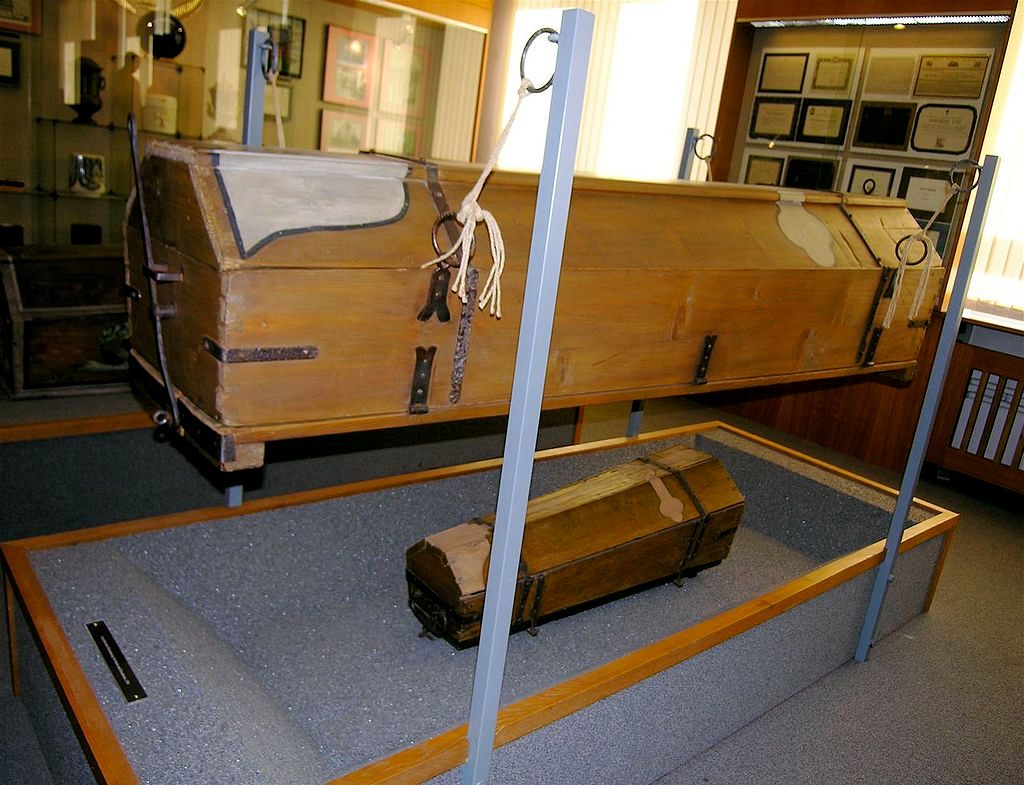
The re-usable coffin, a good idea ahead of its time. (Photo: Ekehnel on Wikipedia)
Now located in the second largest cemetery in Europe, the Undertaker’s Museum in Vienna displays a wide variety of funereal oddities such as a reusable coffin, a collection of elaborate pallbearing attire, and even a pack cigarettes for undertakers with the slogan, “Smoking Protects Jobs…” With well over a 1,000 items in its collection, the museum should leave visitors more curious about the business of death than they ever thought possible.

Giant gas tanks, perfect homes. (Photo: Andreas Poeschek on Wikipedia)
These four circular buildings were built to house massive amounts of depressurizing gas. As gas power technology evolved, the big round silos became obsolete, and were shut down in 1984. Rather than demolish the quartet of beautiful buildings, Vienna gutted them, leaving only the brick exteriors, and turned them into housing communities. In addition to the living spaces, there are offices, and retail locations. The gas houses continue to be used as housing to this day, and have developed a surprising sense of community.

Not too shabby for a giant gas silo. (Photo: Andreas Poeschek on Wikipedia)
 This tower for the insane was thought to look like a cake. (Photo: Gryffindor on Wikipedia)
This tower for the insane was thought to look like a cake. (Photo: Gryffindor on Wikipedia)
Translating to “The Fool’s Tower,” this is another circular structure that has found a second life. Built in 1784, The Narrenturm began life as mainland Europe’s first mental hospital, established to provide a (comparatively) better life for those suffering from mental illness. The “Poundcake” as it was nicknamed was already obsolete by the 1790s and came to house a museum that is today known as the Electro-Pathological Museum. The museum still displays alarming specimens such as disfigured fetuses and taxidermied monkeys.

Just the view of the sky a schizophrenic needs. (Photo: Guenter09 on Wikipedia)
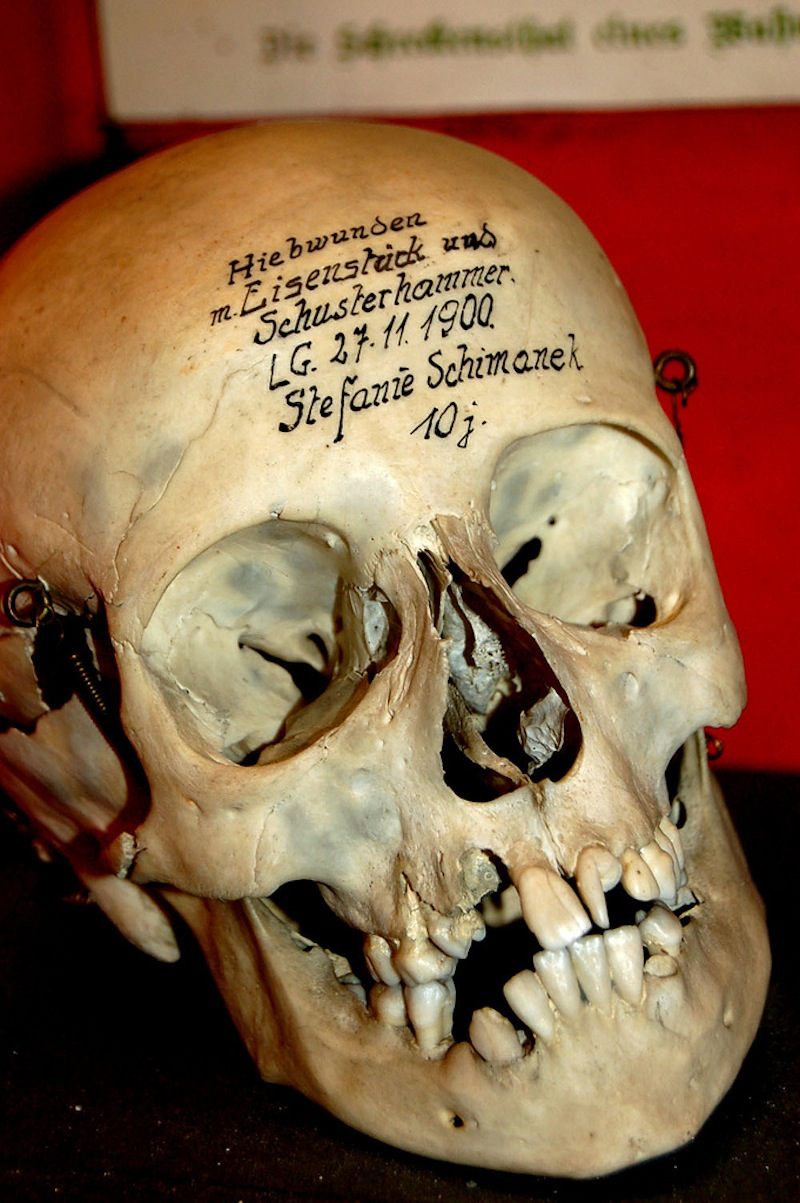
Best tattoo ever? (Photo: CuriousExpeditions.org)
This museum of crime and punishment displays relics and artifacts about the morbid history of bad deeds. Exhibits cover the history of gruesome crimes and their equally gruesome punishments, dating back as far as the Middle Ages. The collection includes graphic illustrations of bloody offenses, skulls of both murderers and their victims, and even the weapons they used. However there are also displays covering brothels, counterfeiting, and lock-picking. It may not be for the faint of heart, but the Kriminalmuseum is certainly unforgettable.

Crime doesn’t pay. Unless your local currency is chains. (Photo: CuriousExpeditions.org)
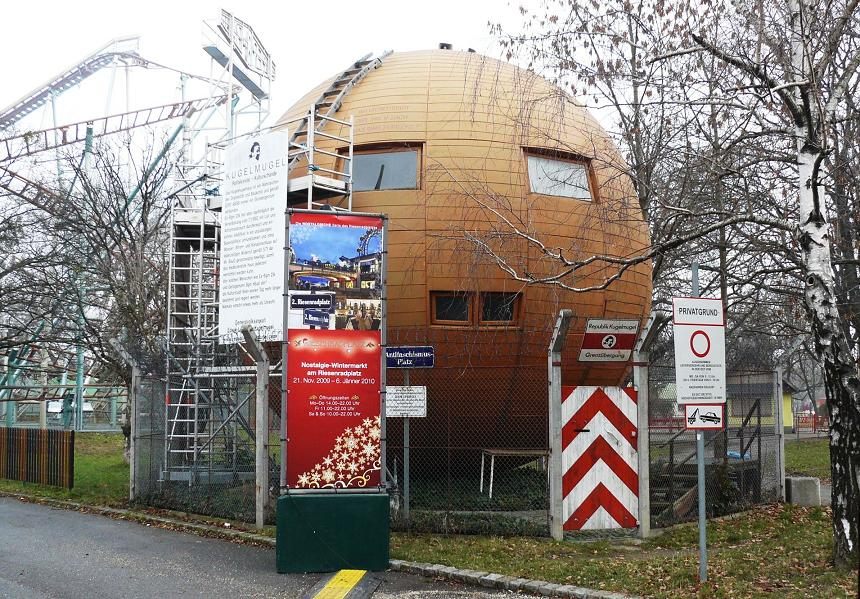
Oh hai, micronation! (Photo: MOs810 on Wikpedia)
When artist Edwin Lipburger set out to create a spherical house in central Austria, the city authorities were less than pleased. So in 1984 Lipburger decided that he would simply make his house its own country, beyond their control, calling this sovereign nation the “Republic of Kugelmugel.” Of course the authorities did not take kindly to this, and Lipburger was jailed for making his own stamps. The Republic won out in the end, as public outcry to save the project reached the ears of the President of Austria, who pardoned Lipburger and saved the spherical building. Today it sits in the Vienna Prater surrounded by a barbed-wire fence.
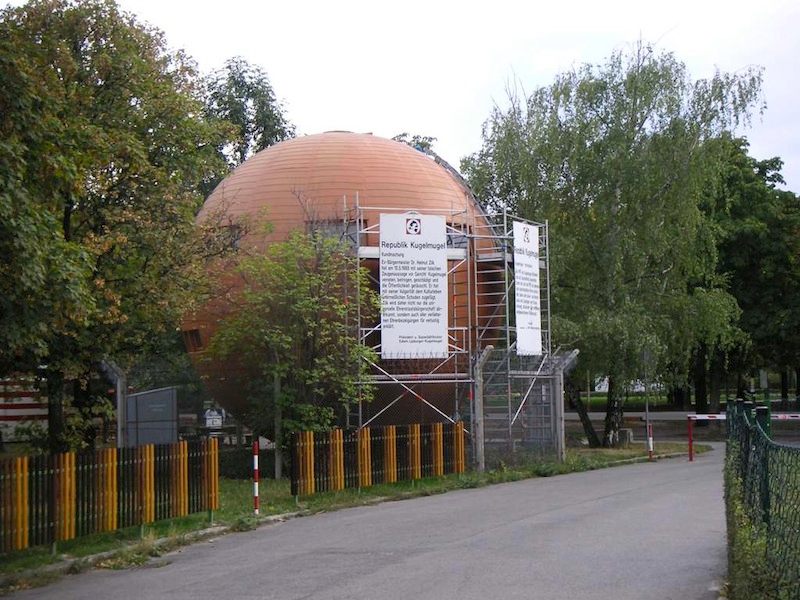
James and the Giant Peach, this is not. (Photo: Priwo on Wikipedia)
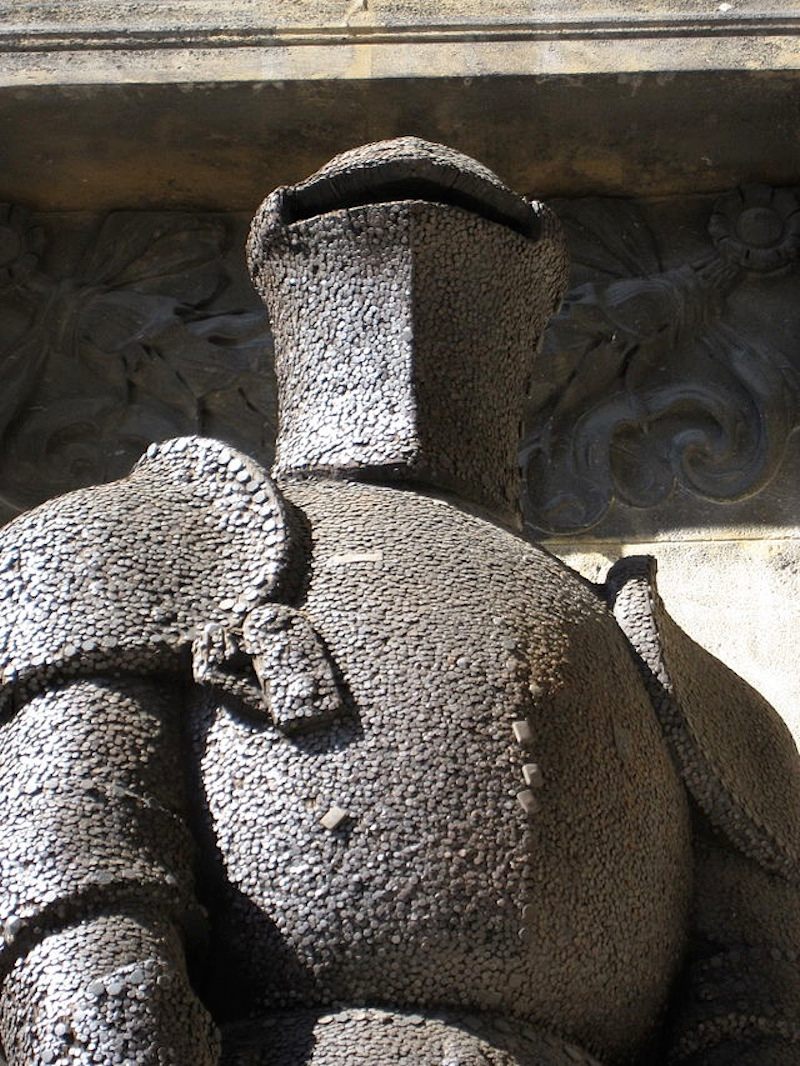
Nailed it. (Photo: Gryffindor on Wikipedia)
While it depicts a suit of medieval armor, this monument was actually created in World War I. The “Iron Soldier” standing outside of the Vienna town hall was created in 1914 as a fundraising effort to support the fighting men of WWI. Beginning with simply a wooden base, the entire figure was created by citizens who would give a donation in exchange for the right to hammer in a nail. The larger the donation, the larger and better located the nail. This charitable spectacle inspired a trend of “nail men” all over Austria, Germany, and places farther afield. The original still stands proud in its Vienna home.
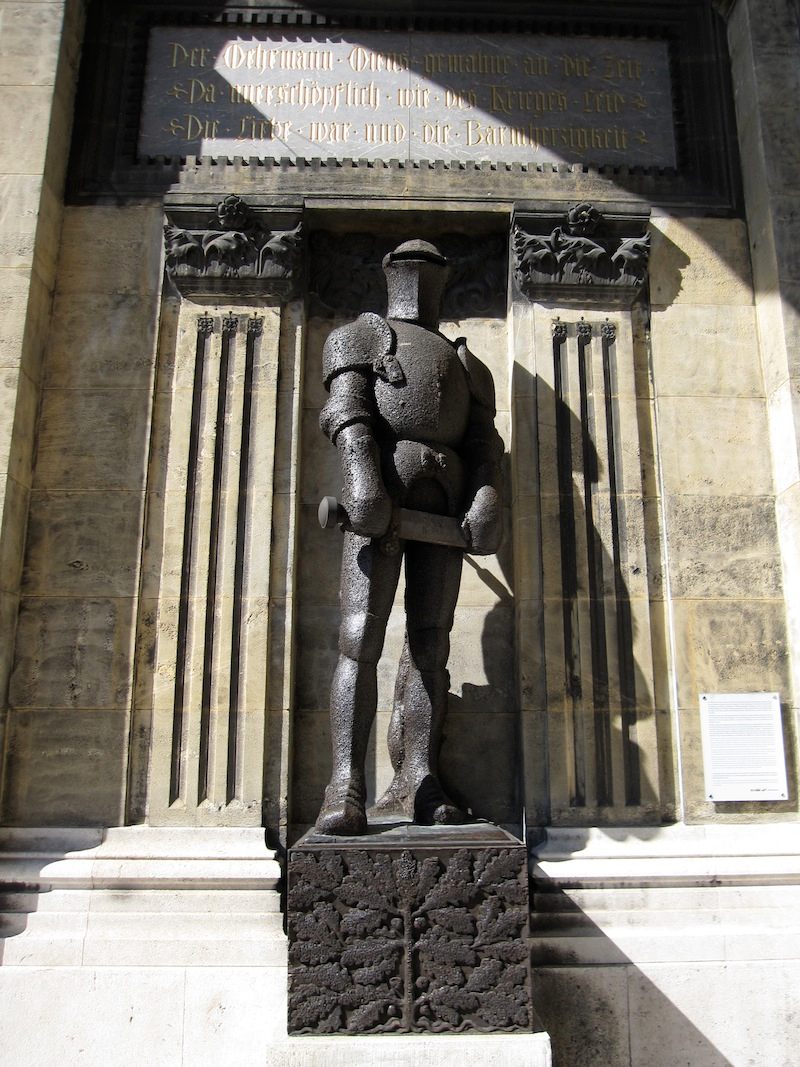
A suit made of nails is a pretty impressive monument, but can’t be that comfortable. (Photo: Gryffindor on Wikipedia)

Looks like a good luck totem to me! (Photo: Drecksau on Wikipedia)
This ancient dead tree may be covered in nails, but unlike the knight above, it actually does date back to the Middle Ages. Currently resting behind glass by the Palais Equitable at the corner of the Graben and Karntner Strasse in Vienna, the ancient nail tree is a relic from a time when nails were a valuable commodity. As was custom in parts of medieval Europe, people would drive nails into the tree as a sacrifice for good luck. Today the tree that is on display in Vienna, which has been identified as a spruce likely dating back to the 15th century, is protected from such offerings. It’s possible that the tradition of nail trees inspired the creation of such monuments as the knight above.
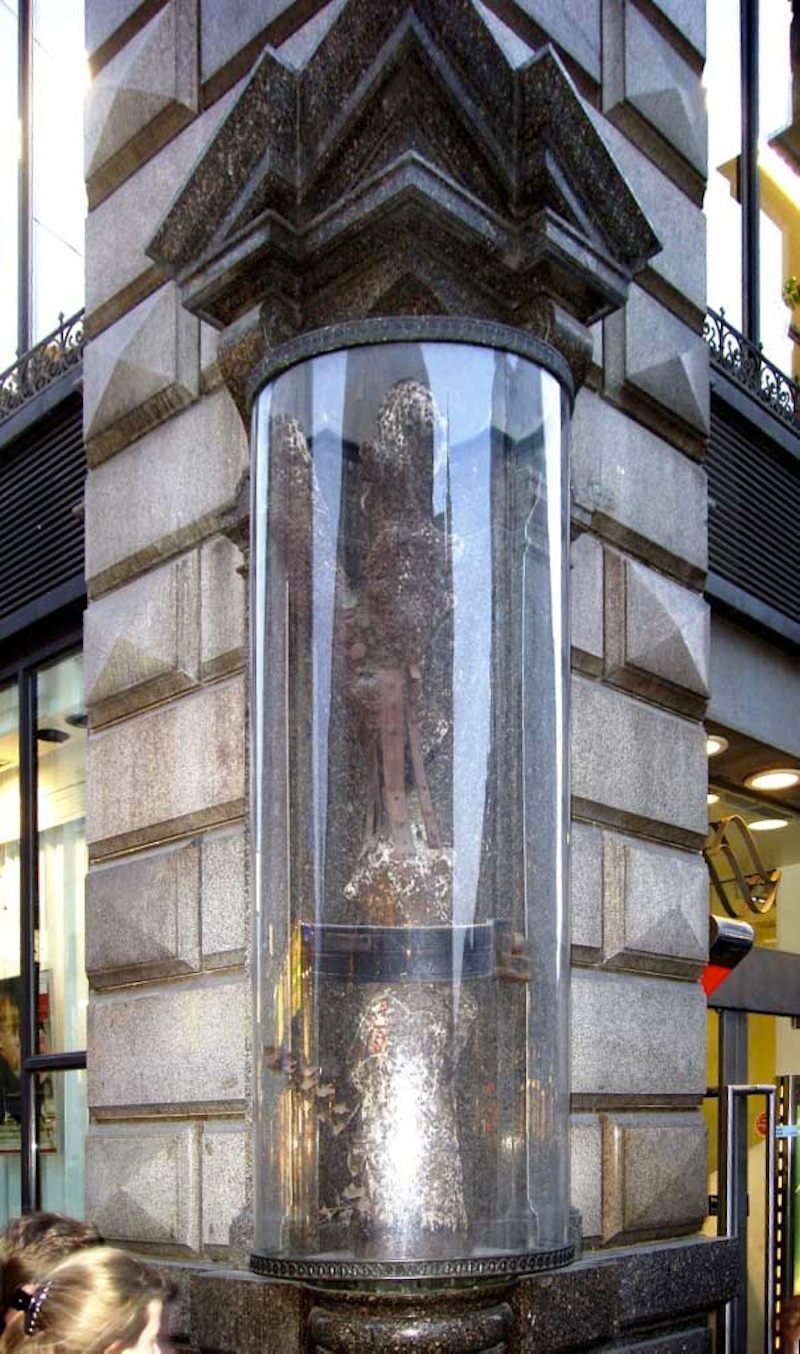
Today the oak and iron sit behind glass. (Photo: Panoramafotos.net on Wikipedia)
 This post is sponsored by Austrian Airlines. Start your Viennese adventure today by booking your trip at Austrian.com and fuel up for adventure with the 14 coffee options offered on each flight.
This post is sponsored by Austrian Airlines. Start your Viennese adventure today by booking your trip at Austrian.com and fuel up for adventure with the 14 coffee options offered on each flight.







Follow us on Twitter to get the latest on the world's hidden wonders.
Like us on Facebook to get the latest on the world's hidden wonders.
Follow us on Twitter Like us on Facebook